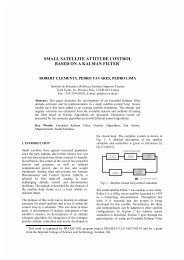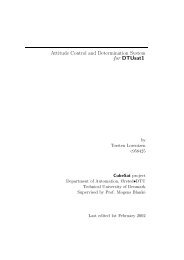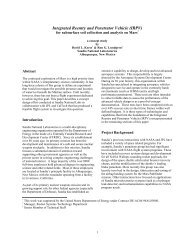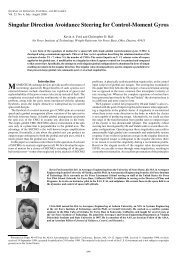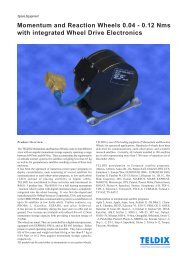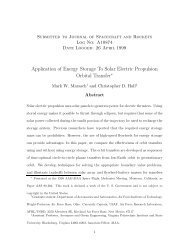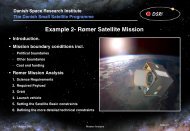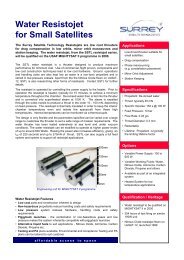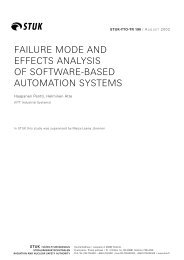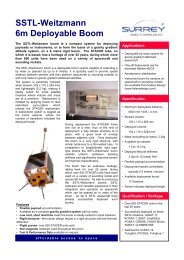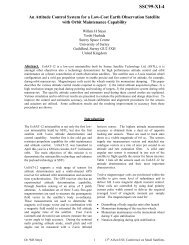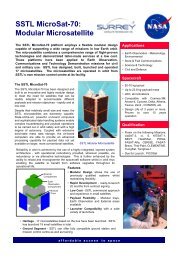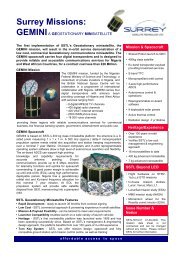Sea Launch User's Guide
Sea Launch User's Guide
Sea Launch User's Guide
You also want an ePaper? Increase the reach of your titles
YUMPU automatically turns print PDFs into web optimized ePapers that Google loves.
Purge air quality<br />
during ground<br />
processing<br />
After encapsulation, the payload fairing air purge defines the spacecraft<br />
environment. This is HEPA filtered and delivered at a nominal cleanliness<br />
of class 1,000 (per FED-STD-209E). Purge air is provided from the<br />
time the payload unit leaves the payload processing facility through liftoff<br />
or launch abort, described in section 5.<br />
The purge air quality is monitored with an airborne particle counter near<br />
the payload fairing inlet. Monitoring is discontinued only during the hoist<br />
of the integrated launch vehicle from the assembly and command ship to<br />
the launch platform, and after erection of the integrated launch vehicle on<br />
the launch pad.<br />
Helium exposure<br />
during ground<br />
processing<br />
Helium concentration in the spacecraft environment is a concern to some<br />
customers. The primary source of helium in the <strong>Sea</strong> <strong>Launch</strong> system is<br />
venting and leakage from the Block DM-SL, with the highest concentration<br />
occurring prior to Block DM-SL liquid oxygen load on the launch<br />
pad. Payload fairing positive pressure, provided by the purge airflow<br />
through the payload structure one-way vent valves, is an effective barrier<br />
to helium leakage from the Block DM-SL cavity.<br />
Spacecraft access<br />
at sea during<br />
ground processing<br />
If access to the spacecraft is required on the launch platform, a temporary<br />
air lock can be installed around the payload fairing access door to provide<br />
a clean zone for working and to shield the payload fairing opening from<br />
debris. Purge air from the payload fairing will provide a clean air environment<br />
within the air lock.<br />
Contamination<br />
during flight<br />
The potential for spacecraft contamination during liftoff, ascent, and<br />
transfer orbit phases is minimized by proper hardware design and flight<br />
design. Flight hardware design considerations include cleanability, selection<br />
of low-outgassing materials, venting design, and containment of pyrotechnics.<br />
Flight design considerations include minimization of thruster<br />
plume impingement and exposure to materials outgassing during separation<br />
maneuvers.<br />
Payload unit materials<br />
outgassing<br />
The payload unit is constructed from low-outgassing materials, screened<br />
using the ASTM E595 outgassing test method. Small amounts of critical<br />
materials may not meet the screening requirement but are accepted based<br />
on other factors, such as moderate flight temperature, small surface area,<br />
or short duration use. A full list of payload accommodation nonmetallic<br />
materials is provided in the generic contamination analysis.<br />
REV B D688-10009-1 5-27



